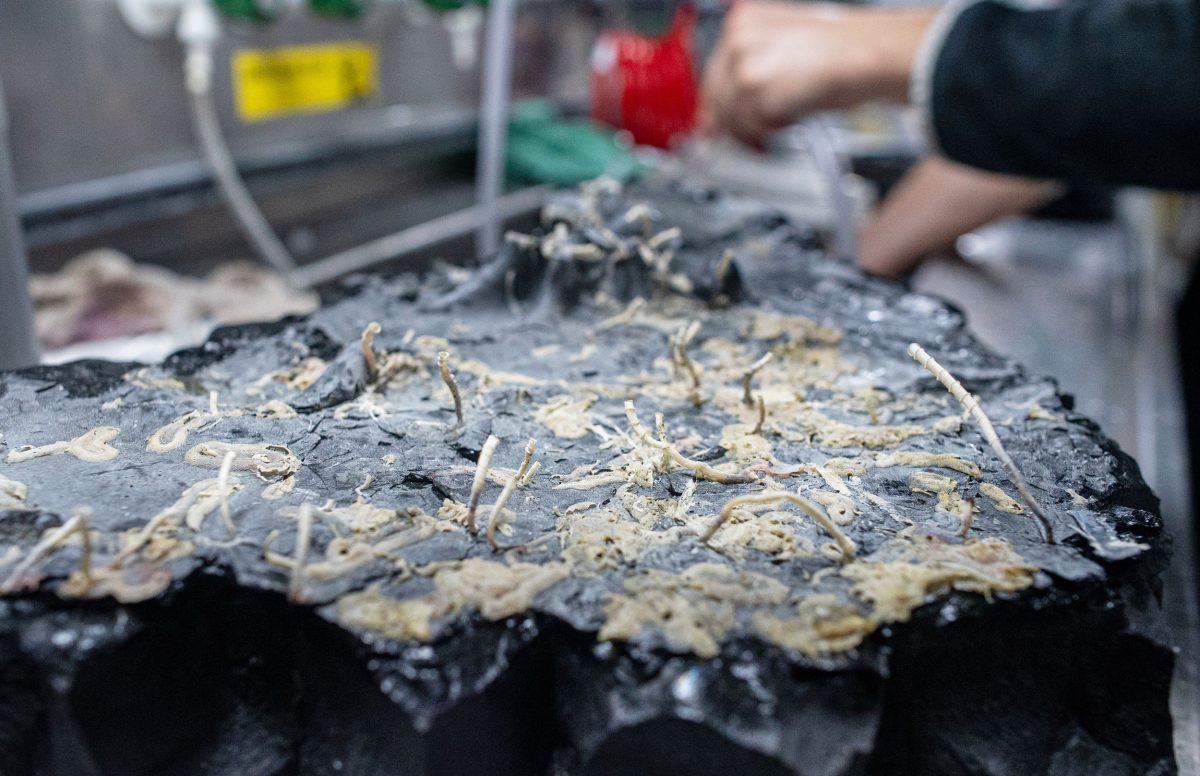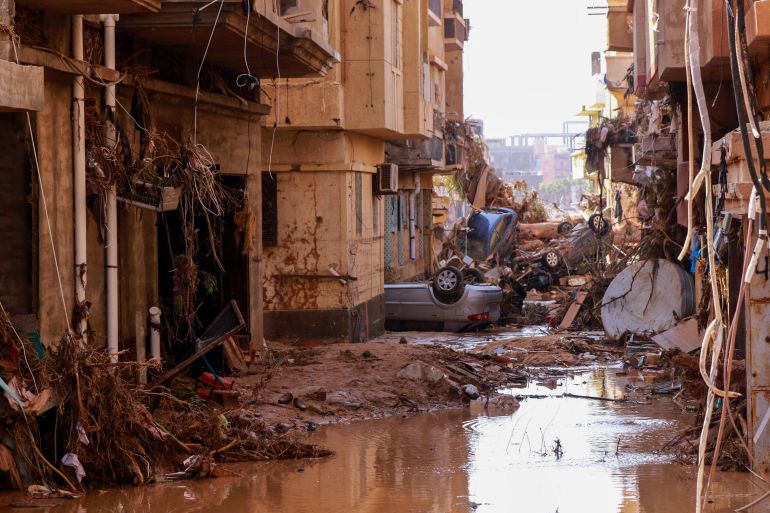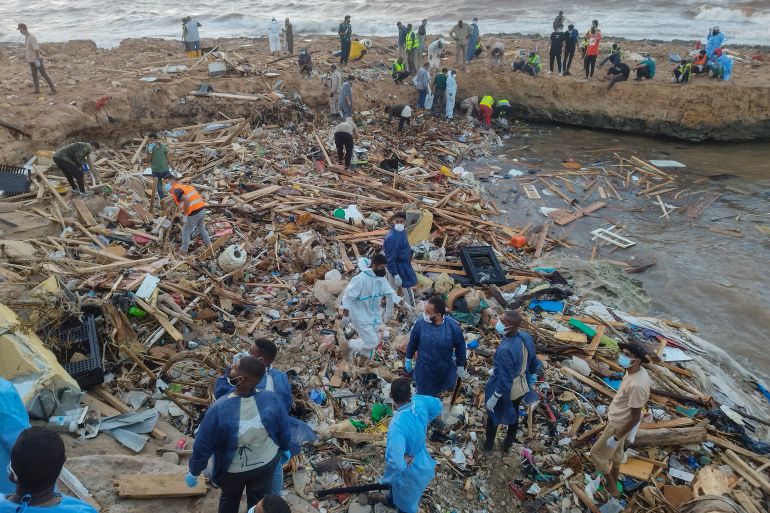PAKISTAN

In Gilgit-Baltistan, climate change is changing how people dream
Mohammad Hassan, a 26-year-old aspiring photographer, was stuck in a dilemma when he found out that his wheat yield, the primary source of income for his family, had dramatically fallen from the usual five sacks to three. An acute water shortage had gripped his hometown, Skardu, located in the heart of the Karakoram mountains, bringing the lives of its residents to a halt.
For Hassan, however, matters were much worse. After years of forethought, he had planned to talk to his parents this summer for permission to go down to Karachi and finally pursue his dream of becoming a professional photographer.
But with the crops scorched and meagre savings, it would be near impossible for him to convince his family. Eventually, he buried his Canon camera, a gift from a foreigner, in a sandook and settled for a job at a construction company in Astore, a town located at a five-hour distance from Skardu.
Earlier this year in March, water in the Sadpara dam — the city’s only water source which caters to all water, drinking, power and irrigation needs of residents — had fallen dead, pushing the city towards a water and food shortage.

“I remember there were days when we used to get water for just 20-25 minutes in the entire day,” Hassan recalled, “and we even saw times where two brothers were fighting each other for water.”
“Such scenes were not seen before in our valley’s long history,” he added.
While the water shortage was soon countered by the ways of mother nature, it left behind a grave warning of the treacherous impacts of climate change in one of the most remote places in the world.
Seasonal shifts
According to the district administration, the Sadpara dam receives water from melting glaciers during the summer season. Usually, the inflows, from May to October, are enough to run the city and fulfil its needs.
This year, however, the inflows were insufficient as water flow from melting glaciers remained irregular due to bad weather, preventing the dam from reaching its maximum level.
According to Dr Muhammad Raza, professor at the Karakoram International University, this phenomenon is called seasonal shifting — changes in the timing of seasons.
Typically, there are four distinct seasons in GB — spring (March-April), summer (May-August), autumn (September-October) and winter (November-February). The timing of these seasons is extremely important because precipitation over the northern mountains melts in early summer and maintains sustainable river flow for irrigation before the onset of the summer monsoon. Similarly, the winter bearing rain systems yield substantial rainfall in plains and sub-mountainous regions.
This year, however, Dr Raza told Dawn.com, the weather stayed cloudy till May and summers arrived by the end of June. “May is a very important month for us because of irrigation and cultivation of crops, and it requires flow in the rivers.
“But instead, the weather remains cloudy till May with even occasional rains,” he rued. “This weather prevents the glaciers from melting, disrupts the water flow and ultimately adversely affects our produce.”
Likewise, summer in the region, although short, is more intense now with temperatures crossing 30 degrees Celsius. Exploring Skardu’s streets in mid-July has now become nothing less than a challenge, not only for visitors but also for locals.
“The scorching sun melts the glaciers, but now that water has metamorphosed into a raging monster that wipes out roads, houses and even people,” the professor explained.
Raza’s argument was also corroborated by a research study on varying temperatures in GB. Carried out using temperature assessments and daily data spanning over the period of 1955-2018, it found a declining trend in summers in GB.
“The falling trends in summer temperatures decreased the flow of water in the Indus river and its tributaries, which seriously disturbed water supply in the upper valleys and lower plain areas for agricultural purposes,” the research noted.
Moreover, Autumn season saw a significant rise in temperatures, which too contributed to the abnormal flows in the rivers.
“The snow and ice area in the form of glaciers is the major source of water for the Indus river, any change in this area will disrupt the water supply down the stream,” the study added.
Shrinking crop yields
This seasonal shifting in Skardu, and the water shortage it brought, has severely affected agriculture in the city. It is important to understand that for the residents of GB, farming is both a means to fulfill their local food consumption and also bring home money.
But this year, the varying temperatures wreaked havoc, leaving behind broken dreams and empty stomachs.
Muhammad Saeed, a local green grocer, was among people who suffered severe losses this year. “A field of vegetables that would normally bring us Rs10,000 was not even sold for Rs1,000,” he told Dawn.com.
Crops of tomatoes, potatoes, cabbage, eggplants, carrots and spinach were scorched due to water shortage, leaving behind dead leaves. “The few vegetables that were cultivated turned out to be sarhi hui [rotten],” Saeed said.

The farmer recalled that, desperate to make some money, he had even bought water tankers for his farms, but one tanker cost between Rs3,000 to Rs4,000 — way out of his budget.
Amjad Ali, who grows wheat, had a similar story to tell. He said a parcel of land that would ideally yield five sacks of wheat could never produce one this year.
In most of the cases, crops were also not sown on time which created other issues for farmers. In Skardu, the timing of sowing and cultivating fields is extremely important because the vegetables and fruit grown in the city are sold in the markets downstream and hence depend on seasonal sales.
But due to lack of water, there was a delay in planting crops, and those that were already sown ended up burnt. This disturbed the entire agricultural cycle in the city and now poses a threat of khoshksali (food shortage) in the near future.
According to Skardu Deputy Commissioner Shehryar Afridi, the city houses nearly 45,000 kanals of agricultural land, but the crop yield in the area was not even half of what it had been the previous year. Fruit trees, too, saw a similar fate.

“Skardu has a demand of 13.4 million gallons per day, but the water supply only amounts to 8.06MGD,” he explained. Because of the persisting 5.34MGD shortage, 120,000 people in the valley face water loadshedding of up to 22 hours everyday.
Afridi said residents of the area are solely dependent on the Sadpara dam for all its water needs. “During the irrigation season, people divert existing drinking water supplies for irrigation purposes, exacerbating the crisis,” he added.
But as the impacts of climate change are now coming forth, he continued, “we can no longer depend on the Sadpara dam and need better alternatives”.
Plan B and C
Desolate and desperate, the local administration of Skardu has prepared a plan B and C to mitigate water shortage in the area.
The first proposition is to install water boring systems across the city. These are quite simply a hole drilled from ground level down to the underground water level or aquifer to obtain water.
DC Afridi told Dawn.com that 13 sites in the city have been identified for this purpose.

The water pumps, he said, would be powered by solar panels. “The boring system will add to the existing water supply infrastructure and negate the need for further infrastructural development.”
For the implementation of the project, the Aga Khan Rural Support Program and Aga Khan Agency for Habitat would provide technical support to the locals.
The institutions, the district commissioner went on to say, would mobilise the local community to install water storage tanks and collect Rs100 from each household through community committees for repair and maintenance.
“This intervention would lead to an increase of 1.5MGD in the water supply and benefit approximately 100,000 people.”
On the other hand, Plan C relies on lifting water from the Indus river for which two sites, comprising four units have been identified — that are not vulnerable to erosion.

Pumps used in the water lifting would be powered by inhouse diesel generators and increase the existing water supply by 2MGD.
According to Afridi, the GB cabinet has recently approved a water boring project, worth Rs132 million, to meet the immediate needs of the city. Similarly, a lift water supply project worth Rs350 million has also been approved.
“What we have to see now is how and when these projects are executed,” he added.
Frequency of climate disasters
In the last few years, GB has faced the brunt of climate change. Several homes, schools and fields spread over thousands of acres have been washed away by flash floods and lake outbursts.
According to the United Nations Development Program, a total of 3,044 glacial lakes — formed due to rapid melting of glaciers — were found in GB and Khyber Pakhtunkhwa in 2022. Of these, 33 were determined to be dangerous, with potential of severely disrupting downstream communities, infrastructure and human settlements.
It added that in July and August last year, at least 30 instances of glacial lake outbursts were reported from the northern areas of the country. Visuals of these events showed massive floods storming down rocky mountains, gulping down everything that came in their way.
On the other hand, rains in GB last month claimed over a dozen lives while landslides blocked the Karakoram Highway and Juglot-Skardu roads — two important highways that connect GB with the rest of the country.
Muhammad Iqbal, a driver based in Skardu, was among the hundreds of people who were stuck in the landslides. “I was bringing tourists to the city, but we were stuck for nearly eight hours at one spot,” he told Dawn.com.
There were flash floods in streams along the river, the 50-year-old recalled, adding that because of the wet and slippery roads, several accidents were taking place on the highways on a daily basis.
“These events are not new to us,” Iqbal, who has been driving in and out of GB for the past 20 years, said. But he admitted that these incidents had substantially increased in the past two to three years.
Laila Naz, communications manager at the Aga Khan Development Network (AKDN), termed this an increase in the frequency of erratic climate patterns. Both a resident of and having closely worked with mountain communities, she said climate disasters were nothing new and had been taking place as long as the Earth has existed.
“What has instead changed is that climate events that were taking place once in 600 years are now occurring every year.”
As a child, Naz recalled, she had heard about massive floods in bedtime stories narrated by her grandmother. “But in the last one decade, I have witnessed shaking grounds, frightening thunders and massive torrents.”
While the unpredictability and invariability of nature cannot be ruled out, human intervention should equally be blamed for these recurring natural disasters.
Human intervention
According to a 2023 study titled ‘Mountain and Climate Change’, the main cause of climate change is the increase in human population and its activities, particularly the use of fossil fuels such as coal, oil and gas.
Deforestation and landfills, it added, are major contributors to climate change.

Meanwhile, Karakoram university’s Dr Raza blames the increased commercialisation and construction in the mountainous regions for the exacerbating climate crisis in the region.
“You need to understand that the ecology of mountains is very fragile and the slightest of change in it can wreak havoc,” he told Dawn.com. For example, construction. “These people here blow up rocks using explosives to create roads and buildings, this releases radiation in the air — poison for an environment as fragile as the one in Skardu.”
Similarly, the professor recalled, there were nearly 50,000 mud houses in the city alone that have now been replaced by concrete structures, which absorbs and emits heat into the environment, contributing to the rising temperatures in the region.
Dr Raza further mentioned the burning of fuel, which he counted as another contributor to the climate crisis. “Every day, nearly 50,000 litres of fuel in burnt in Skardu for various purposes. This releases large amounts of carbon dioxide into the air, which causes global warming.”
AKDN’s Naz concurred. “Overpopulation has reduced land available in the region and led to over-utilisation of resources,” she lamented.
Local grazing in the area, she continued, has increased over the past few years which has softened the soil and scraped forests — which play a vital role in the stopping floods.
“When we receive rainfall, trees located on mountains act as hurdles in the way of the fast-flowing waters and absorb it in their roots, preventing floods.
“Simultaneously, in the absence of rains, these trees send the water stored in their roots to streams and rivers, consequently creating the perfect balance in the sustainable flow of water,” Naz elaborated.
“So without these trees, the floods are more severe, faster and deadlier.”
Course correction
First and foremost, risk areas, specially those up north, need to be identified and people living there need to be relocated to prevent loss of life.
On the other hand, areas that are sensitive and remote, such as Deosai Plains, need to be demarcated as green zones by district authorities.
“To do this, you need indigenous knowledge. Local tribes and people living in the mountains know things you and I don’t. For example, they know that sandy areas are more prone to flooding, hence advise against building houses there,” Naz said.
Secondly, there’s a need to move from cutting wood to producing electricity through solar and hydro energy. “At AKDN, we teach watershed management — the process of implementing land use practices and water management practices to protect and improve the quality of the water and other natural resources — to the locals, encourage tree plantation and use renewable energy for electricity.”
Separately, Naz also stressed the need for “responsible tourism”. Access to remote places across Pakistan, such as Skardu, have increased over the years. In 2021, a record 700,000 tourists — both local and domestic — visited GB.
But the surge in tourism has put these fragile areas at risk.
A visit to the Deosai Plains last month showed how a location, often also called the second roof of the world, at a height of over 4,000 meters, is left at the mercy of visitors. In a place abundant with flowers, trash is surprisingly also common in sight, despite dustbins at ever point.
Diapers can be seen lying near streams, plastic bottles thrown at the bank of lakes and the list goes on.
“I have been bringing tourists here for 10 years now and can now seen the impact of the influx in tourists is having in the area,” Iqbal, the driver, told Dawn.com.
He said the plains were blanketed with snow till late June and early July this year, which as per him was strange. “Usually, the area is open throughout the summer months, but the weather has become very unpredictable lately.”
Iqbal added that even though Deosai was popular for its bears, the animals were now in danger because the number of people visiting Deosai Plains is increasing. “They are now retreating to mountain peaks because their homes are being encroached.”
The solution to this, in Naz’s opinion, is educating tourists.
“We can’t blame them, neither can we stop them because tourism is the only industry that sustains in the area,” she said. “But what we can do is educate them about the fragility of these mountains.”
For one, tourists entering GB can be given brochures, pamphlets or sessions where they are told about the do’s and don’ts, where they are taught that the beauty of this area depends on its ecosystem and carelessness would take away all of this from us.
“But none of this can be done without the government’s support,” Dr Raza told Dawn.com, adding that authorities should “think of us as their own”.
“They need to take responsibility and bring sustainability to the area,” he emphasised.
Header image: The Sadpara dam, once full to the brim, dried up in summers this year. — All photos by author





 Overturned cars lay among other debris caused by flash floods in Derna, eastern Libya on September 11, 2023 [AFP]
Overturned cars lay among other debris caused by flash floods in Derna, eastern Libya on September 11, 2023 [AFP]
 Rescuers and relatives search for bodies of victims in Derna [File: Abdulaziz Almnsori/AP Photo]
Rescuers and relatives search for bodies of victims in Derna [File: Abdulaziz Almnsori/AP Photo]